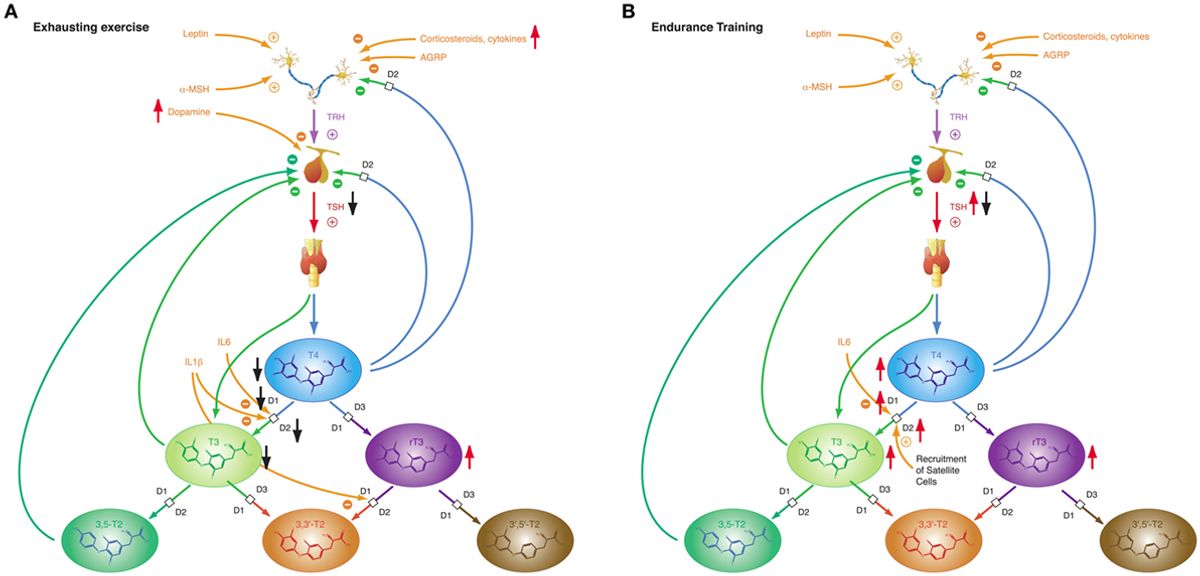
Revitalize and Restore: How to Recover Your Body Post-Workout
Soothe Those Muscles: Post-Exercise Recovery Techniques

Cool Down Routines to Ease Tension
After pushing your limits with a killer workout, it's tempting to just crash on the couch. But hold up—your muscles are begging for a proper cool down. Easing out of exercise mode with a cool down routine is crucial for reducing muscle tension and preventing stiffness.
Cooling down should be as much a part of your workout as the sweat session itself. Here's a quick list to get you started:
- Begin with light cardio (like walking) for 5 minutes to gradually lower your heart rate.
- Transition into dynamic stretches that target the muscles you've just worked.
- Finish with static stretches, holding each for at least 30 seconds.
Remember, a cool down is your body's way of saying thank you. Skipping it can lead to muscle soreness and reduced flexibility—so don't skimp on it!
By incorporating these steps into your post-workout routine, you'll help your body recover faster and be ready to hit the gym again with full force.
Stretching: The Key to Flexibility and Repair
After you've powered through a tough workout, your muscles are in desperate need of some TLC. That's where stretching comes into play. It's not just about bending and twisting; it's a crucial step in preventing stiffness and promoting muscle repair. Stretching can significantly enhance your flexibility and reduce the risk of injury.
- Start with dynamic stretches to warm up the muscles.
- Move on to static stretches, holding each for at least 30 seconds.
- Focus on major muscle groups used during your workout.
Remember, stretching isn't a race. Take your time and listen to your body. If it hurts, ease up a bit.
Incorporating a regular stretching routine post-exercise can lead to better performance in your next workout session. It's not just about the immediate relief; it's an investment in your body's long-term well-being.
Massage Therapy: Does It Really Help?
Ever wondered if that post-workout massage is actually doing your body any good? Well, it turns out that massage therapy isn't just a luxurious splurge—it's a legit technique for speeding up recovery. Massage helps reduce muscle soreness and inflammation, making it a valuable ally in your recovery arsenal.
But how does it work? Massage stimulates circulation, which means more oxygen and nutrients can reach those tired muscles. Plus, it can help break up knots that cause discomfort and limit movement. Here's a quick rundown of the benefits:
- Enhances blood flow
- Reduces muscle tension
- Increases flexibility
- Promotes relaxation
Remember, the goal is to aid recovery, not to add stress. So, if a massage feels too intense, don't hesitate to speak up and ask for a lighter touch.
While massage can be a powerful tool, it's not the only one. Make sure to combine it with other recovery methods for the best results. And hey, if nothing else, it's a fantastic way to relax and reward yourself for a hard workout!
Refuel the Tank: Nutrition for Muscle Recovery

Protein Power: What to Eat After a Workout
After pushing your muscles to the limit, it's crucial to give them the building blocks they need to repair and grow stronger. Protein is your post-workout pal, helping to repair muscle fibers and facilitate growth. But not all protein sources are created equal.
Chicken breast, quinoa, and Greek yogurt are top-notch choices that pack a serious protein punch without a lot of extra fat. Here's a quick list of some great options:
- Grilled chicken or turkey
- Fish like salmon or tuna
- Plant-based proteins such as lentils, chickpeas, or tofu
- Dairy products like cottage cheese or Greek yogurt
- Protein shakes or bars for on-the-go convenience
Remember, timing is everything. Try to consume your protein within 45 minutes after your workout to maximize absorption and muscle recovery.
While protein is key, it's not the only player on the team. Carbs and fats also have important roles in the recovery process, so don't shy away from a balanced meal. Just keep it lean and mean!
Hydration Hacks: Why Water is Your Best Friend
We all know that hydration is key after a tough workout, but how much water should you actually be chugging? Listen to your body and aim for clear or light yellow urine as a sign you're on the right track. But it's not just about quantity; timing is crucial too.
- Start by sipping water throughout your workout to stay ahead of thirst.
- Immediately post-workout, gulp down a good 16 ounces.
- Continue to hydrate regularly for the next few hours.
Remember, if you're sweating buckets, you'll need to replace not just water, but also electrolytes. Consider a sports drink or coconut water to replenish those vital minerals.
Don't underestimate the power of water in your recovery arsenal. It's the simplest, yet most effective tool you have to kickstart the recovery process and get ready for your next workout session.
The Scoop on Supplements: Are They Necessary?
Ever wondered if you really need to chug down that protein shake or pop a multivitamin after hitting the gym? Let's break it down. Supplements can be a convenient way to ensure your body gets the nutrients it needs to recover, but they're not a magic bullet. It's crucial to understand that supplements should complement, not replace, a balanced diet.
Real food should always be your first choice for nutrients. However, if you're pushing your limits or can't meet your nutritional needs through diet alone, supplements might fill in the gaps. Here's a quick rundown of some popular post-workout supplements:
- Protein powders: Help rebuild muscle.
- BCAAs: May reduce muscle soreness.
- Creatine: Can improve strength and power.
- Vitamins & Minerals: Essential for overall health.
Remember, the key is balance. Don't rely solely on supplements to do the heavy lifting for your recovery.
Before you start loading up on supplements, consider your diet, workout intensity, and goals. And hey, it's always a good idea to chat with a healthcare professional before starting any new supplement regimen.
Catch Those Zs: The Role of Sleep in Recovery

Understanding Sleep Cycles and Muscle Repair
Ever wondered why you feel like a superhero after a good night's sleep? That's because sleep is when your body goes into overdrive repairing those hard-worked muscles. Deep sleep, in particular, is when the magic happens – it's the prime time for muscle growth and repair.
During the night, your body cycles through different stages of sleep, each playing a vital role in recovery. The REM (Rapid Eye Movement) stage is often talked about, but it's the non-REM stages that are the heavy lifters for physical restoration. Here's a quick rundown:
- Stage 1: The lightest stage, where you're just drifting off.
- Stage 2: Slightly deeper, your body starts to relax more.
- Stage 3: Now we're in deep sleep territory, where growth hormone is released.
- Stage 4: The deepest stage, crucial for muscle repair and recovery.
Remember, it's not just about the quantity of sleep, but the quality. Ensuring you cycle through these stages multiple times is key to waking up refreshed and ready to tackle the next workout.
So, how can you improve your sleep cycles? Stick to a consistent sleep schedule, create a restful environment, and maybe skip that late-night espresso. Your muscles will thank you!
Tips for a Restorative Sleep Post-Workout
Getting quality sleep after a tough workout isn't just a luxury—it's a necessity for muscle recovery. Creating a sleep-conducive environment is key. Keep your bedroom cool, dark, and quiet to signal to your body that it's time to wind down.
Sleep consistency is also crucial. Try to go to bed and wake up at the same times every day, even on weekends. This helps regulate your body's internal clock and can improve the quality of your sleep.
- Avoid heavy meals and caffeine close to bedtime.
- Disconnect from electronic devices at least an hour before sleep.
- Consider a short meditation or reading to relax your mind.
Remember, sleep isn't just about quantity; it's about quality. Ensuring you get deep, uninterrupted sleep is vital for your muscles to repair and grow stronger.
Napping: A Secret Weapon for Recovery?
Ever thought about hitting the snooze button after a grueling workout? Well, it turns out that a quick nap might be just what your body needs to kickstart recovery. Napping can significantly enhance physical and mental recovery, providing a much-needed energy boost and aiding in muscle repair.
Power naps of 20-30 minutes are ideal for recharging without falling into a deep sleep, which can sometimes leave you feeling grogier than before. Here's a quick rundown on how to optimize your nap time for maximum recovery benefits:
- Keep it short: Aim for 20-30 minutes to avoid sleep inertia.
- Time it right: Early afternoon naps prevent interference with nighttime sleep.
- Create a restful environment: Find a quiet, dark place to rest.
Remember, napping is not a substitute for a good night's sleep, but it can be a powerful tool in your recovery arsenal when used wisely.
Mind Matters: Mental Recovery and Relaxation
The Connection Between Mindfulness and Muscle Healing
Ever wondered why those zen masters seem so chill and healthy? Well, it turns out that mindfulness might just be the secret sauce to muscle recovery. Mindfulness practices can significantly reduce stress levels, which in turn, can decrease inflammation and promote healing. It's all about tuning into your body and giving it the TLC it deserves.
Stress is a recovery saboteur, and mindfulness is like your personal stress buster. By focusing on the present moment and calming the mind, you're setting the stage for a more effective recovery. Here's a quick rundown of how to incorporate mindfulness into your post-workout routine:
- Take 5-10 minutes to meditate, focusing on your breath.
- Perform gentle yoga poses that encourage relaxation.
- Use visualization techniques to imagine your muscles healing and strengthening.
Remember, your mind is a powerful ally in the recovery process. A little bit of mindfulness goes a long way in helping your muscles bounce back from a tough workout.
Breathing Techniques for Stress Reduction
Ever noticed how a deep breath can calm the nerves? That's no coincidence. Breathing techniques are a powerful tool for stress reduction, helping to lower the heart rate and promote relaxation after a strenuous workout. By focusing on your breath, you're not just filling your lungs; you're signaling your body to chill out.
Deep breathing exercises can be done anywhere, anytime. Just a few minutes can make a world of difference in your recovery process.
Here's a simple routine to get you started:
- Sit or lie down in a comfortable position.
- Slowly inhale through your nose, counting to four.
- Hold your breath for a count of four.
- Exhale completely through your mouth, again counting to four.
- Repeat for a few minutes, or until you feel more at ease.
Remember, the goal is to reduce stress, not add to it. So, don't worry about getting it perfect. Just breathe, relax, and give your muscles—and your mind—a well-deserved break.
Unwinding with Yoga: More Than Just Stretching
Yoga isn't just about hitting those impressive poses or stretching beyond your comfort zone. It's a holistic practice that combines physical postures, breathing techniques, and meditation to promote mental and physical well-being. Incorporating yoga into your recovery routine can help in reducing stress and muscle tension, while also enhancing your overall flexibility and balance.
Yoga offers a unique blend of benefits that go beyond the physical. It encourages mindfulness, which can be particularly beneficial after a grueling workout. By focusing on your breath and being present in each pose, you're giving your mind a much-needed break from the hustle of daily life.
- Relaxation: Yoga helps in calming the nervous system, which is essential for recovery.
- Flexibility: Regular practice increases joint mobility and muscle flexibility.
- Strength: Certain poses build muscle strength in a gentle way, complementing your workout.
- Balance: Improves proprioception and coordination, which can enhance athletic performance.
Remember, yoga is not a competition. It's about listening to your body and moving at a pace that feels right for you. Embrace the stillness and let your body recover in its own time.
Mix It Up: Cross-Training for Balanced Recovery

Why Variety in Your Workout Routine is Beneficial
Ever feel like you're stuck in a workout rut, doing the same exercises day in and day out? Mixing up your routine is more than just a way to keep boredom at bay. It's crucial for balanced muscle development and can help prevent overuse injuries. By challenging your body in different ways, you're not only improving overall fitness but also giving muscle groups a chance to rest and recover while you work on others.
Incorporating a variety of workouts can lead to better balance and coordination, as you're not overworking one set of muscles. Think about it: if you're always running, you're constantly putting stress on your knees and ankles. But throw in some swimming or cycling, and you're giving those joints a break while still boosting your cardio.
- Strength Training: Builds muscle and bone density
- Cardio: Improves heart health and burns calories
- Flexibility Exercises: Enhances range of motion and prevents injury
- Balance Training: Stabilizes core muscles and improves coordination
Remember, the goal isn't to master one type of exercise but to create a well-rounded fitness regimen that keeps your body guessing and growing. Variety isn't just the spice of life; it's the secret sauce of a sustainable and successful workout plan.
Low-Impact Activities for Active Recovery Days
After pushing your limits with high-intensity workouts, your body deserves a break. But taking a day off doesn't mean you have to be a couch potato. Low-impact activities can be the perfect way to keep moving while giving your muscles the gentle love they need.
Swimming, walking, and cycling are fantastic options that keep the blood flowing without the heavy strain. These activities help maintain your fitness level while also promoting muscle recovery and reducing the risk of injury.
- Swimming: Gentle on the joints and great for full-body engagement.
- Walking: A simple way to stay active; try varying your pace or incline for a bit of a challenge.
- Cycling: Low resistance settings can provide a recovery-friendly workout.
Remember, the goal of active recovery is to engage in activities that are less intense than your regular workouts but still allow you to move and feel good. It's about listening to your body and giving it the recovery it needs while staying in motion.
Incorporating Rest Days: A Crucial Component
We often hear about the grind, the push, the relentless pursuit of physical goals. But here's the thing: your body needs a break. Rest days are not just a luxury; they're a necessity for muscle recovery and overall well-being. Think of them as the silent partner in your fitness journey, allowing for the repair and strengthening of tissues after the stress of workouts.
- Listen to your body: If you're feeling worn out, that's a clear signal to take it easy.
- Plan ahead: Schedule rest days just as you would a workout session.
- Stay active: Opt for light activities like walking or gentle yoga to keep the blood flowing without overexertion.
Remember, rest days can boost your performance in the long run by preventing burnout and injury. They're the unsung heroes that keep the wheels of progress turning smoothly.
So, don't skimp on the downtime. Embrace it, and watch as your body thanks you with renewed energy and strength. After all, the road to peak fitness isn't about going full throttle all the time; it's about finding the right balance between exertion and recovery.


